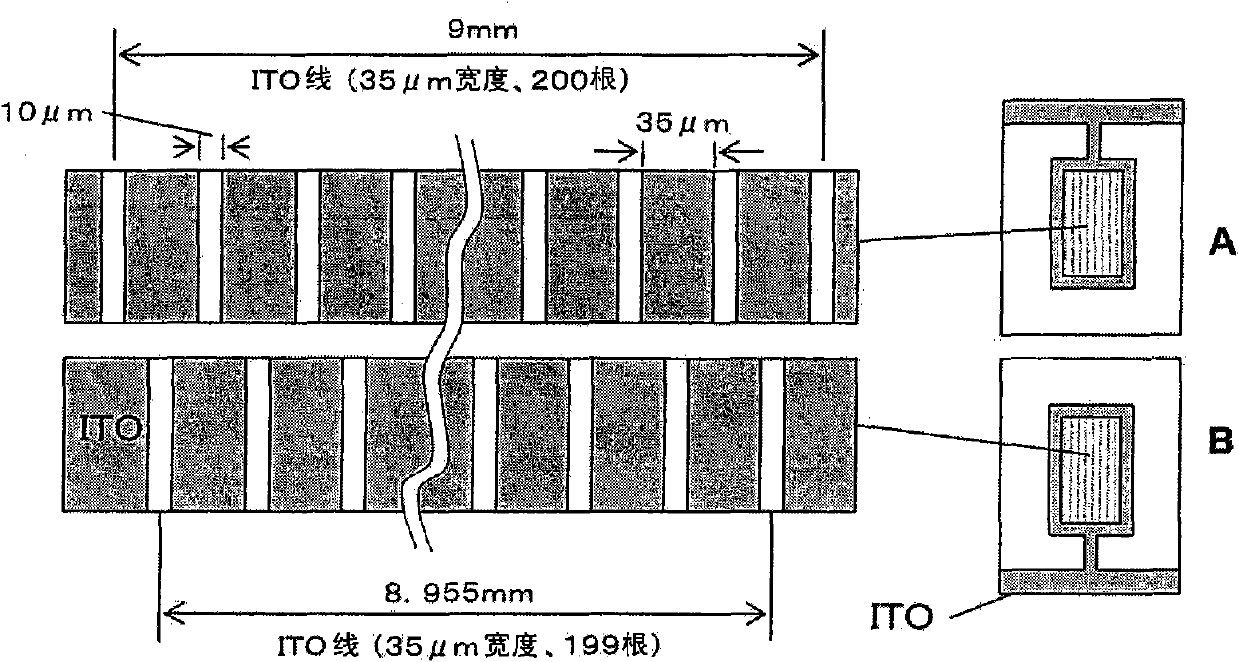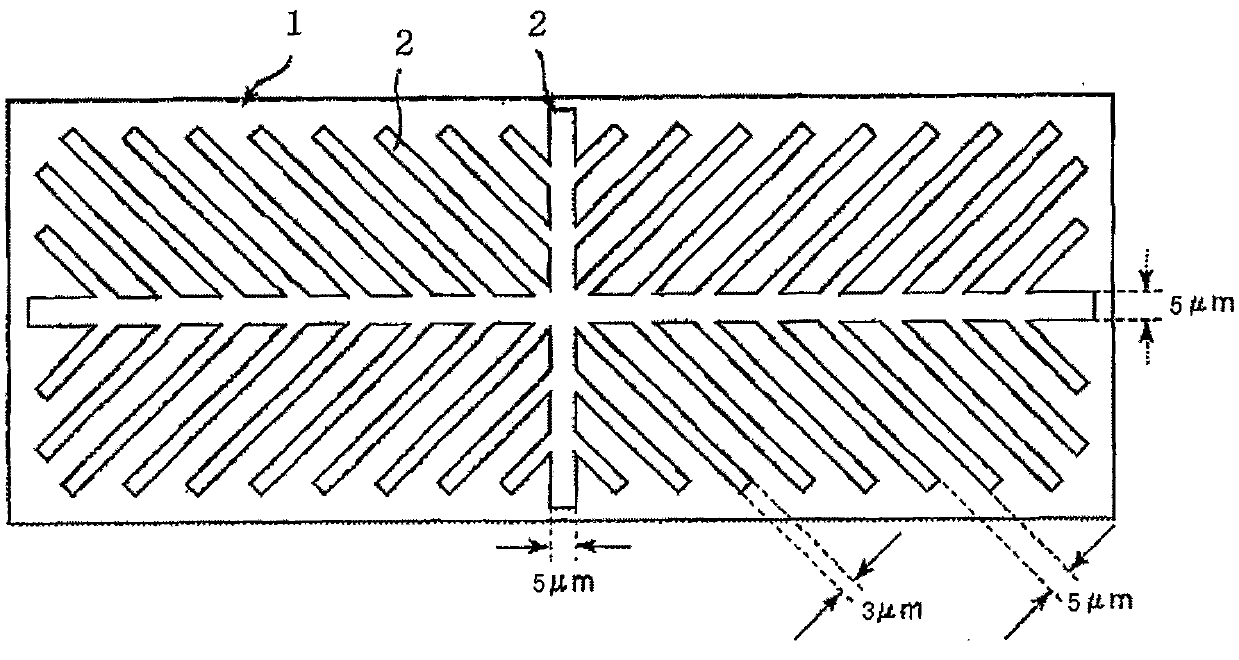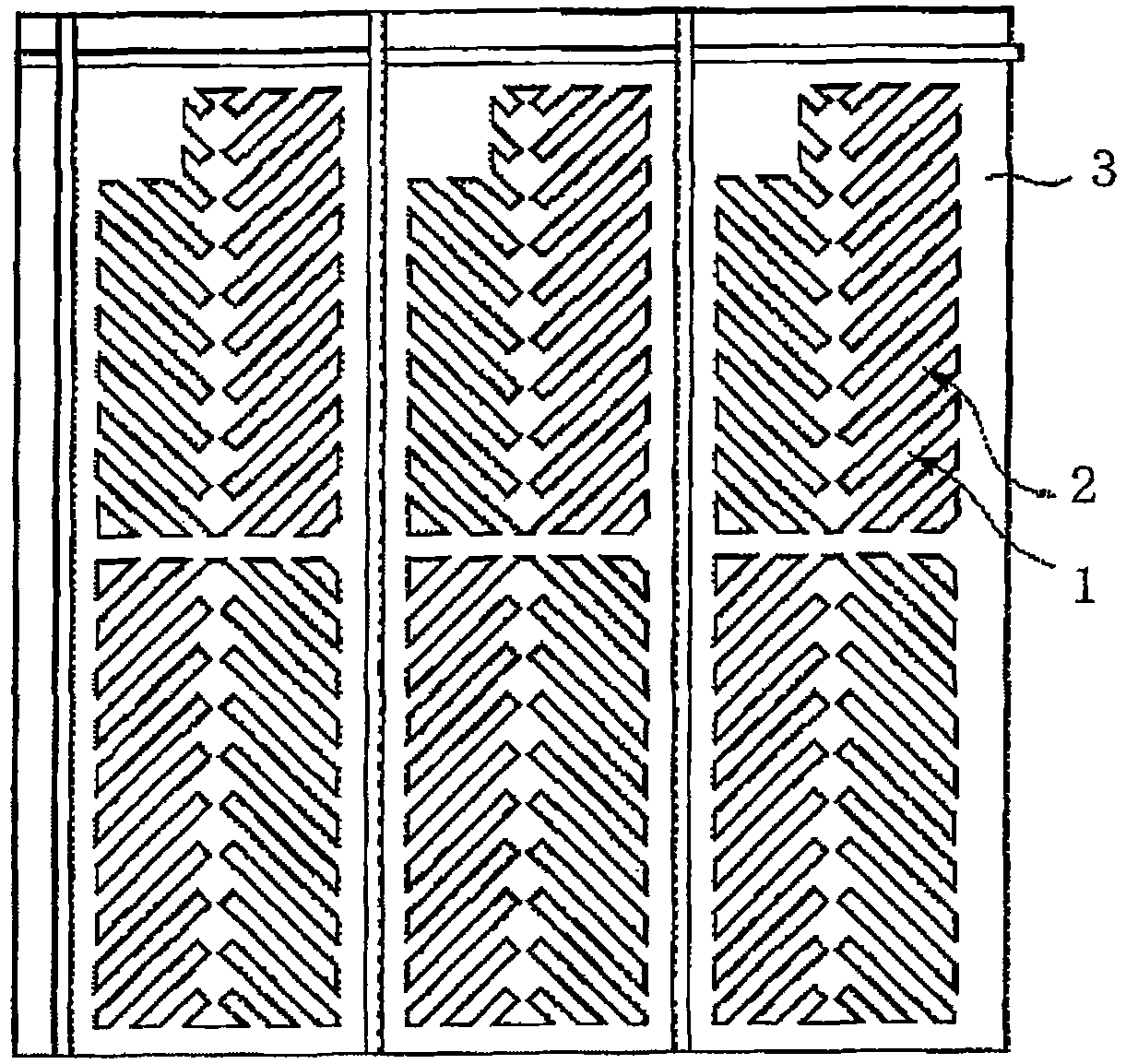Manufacture method of a liquid crystal display element, polymer composition and liquid crystal display element
A technology for liquid crystal display elements and manufacturing methods, applied in the directions of liquid crystal materials, chemical instruments and methods, instruments, etc., can solve the problems of no record of reactive mesogens, inability to exclude display properties, voltage retention properties, and large amount of ultraviolet radiation, etc. Excellent display properties, loss of display properties, and effect of reducing manufacturing costs
- Summary
- Abstract
- Description
- Claims
- Application Information
AI Technical Summary
Problems solved by technology
Method used
Image
Examples
Synthetic example 1
[0200] 110g (0.50mol) of 2,3,5-tricarboxycyclopentylacetic dianhydride as tetracarboxylic dianhydride, 43g (0.40mol) of p-phenylenediamine as diamine and 52g (0.10mol) of 3-(3,5-Diaminobenzoyloxy)cholestane was dissolved in 830 g of N-methyl-2-pyrrolidone, and the reaction was carried out at 60° C. for 6 hours. A small amount of the obtained polyamic acid solution was collected, and N-methyl-2-pyrrolidone was added to form a solution with a polyamic acid concentration of 10% by weight. The measured solution viscosity was 60 mPa·s.
[0201] Next, 1,900 g of N-methyl-2-pyrrolidone was added to the obtained polyamic acid solution, 40 g of pyridine and 51 g of acetic anhydride were added, and a dehydration ring-closure reaction was performed at 110° C. for 4 hours. After the dehydration ring-closing reaction, the solvent in the system is replaced with a new N-methyl-2-pyrrolidone solvent (in this operation, the pyridine and acetic anhydride used in the dehydration ring-closing rea...
Embodiment 1
[0203]
[0204] In the solution containing polyimide (PI-1) obtained in the above Synthesis Example 1 as the polymer (A), N-methyl-2-pyrrolidone (NMP) and butyl cellosolve (BC ), then add the compound represented by the following formula (B-1) as (B) compound, and be 20 parts by weight relative to 100 parts by weight of the above-mentioned (A) polymer, forming a solvent composition NMP:BC=50:50 (weight Ratio), a solution with a solid content concentration of 6.0% by weight. This solution was filtered using a filter with a pore size of 1 μm to prepare a polymer composition.
[0205]
[0206]
[0207] Using the polymer composition prepared above, a total of 6 liquid crystal display elements were produced by changing the pattern of the transparent electrode (2 types) and the amount of ultraviolet irradiation (3 levels), and evaluated as follows.
[0208] [Fabrication of Liquid Crystal Cells with Unpatterned Transparent Electrodes]
[0209] Using a liquid crystal alignmen...
Embodiment 2~5
[0230] In the above-mentioned Example 1, except that the type and amount of the compound (B) are as described in Table 1, a polymer composition was prepared in the same manner as in Example 1, and various liquid crystal cells were manufactured and evaluated using the polymer composition. .
[0231] The evaluation results are shown in Table 1.
PUM
| Property | Measurement | Unit |
|---|---|---|
| thickness | aaaaa | aaaaa |
| viscosity | aaaaa | aaaaa |
| viscosity | aaaaa | aaaaa |
Abstract
Description
Claims
Application Information
 Login to View More
Login to View More - R&D
- Intellectual Property
- Life Sciences
- Materials
- Tech Scout
- Unparalleled Data Quality
- Higher Quality Content
- 60% Fewer Hallucinations
Browse by: Latest US Patents, China's latest patents, Technical Efficacy Thesaurus, Application Domain, Technology Topic, Popular Technical Reports.
© 2025 PatSnap. All rights reserved.Legal|Privacy policy|Modern Slavery Act Transparency Statement|Sitemap|About US| Contact US: help@patsnap.com



